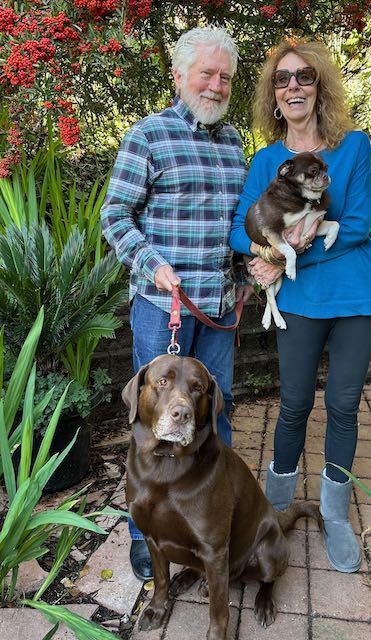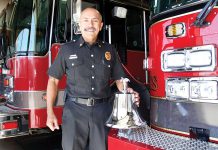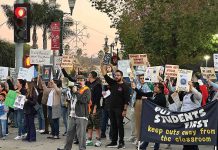By DREW ROGERS
CONTRIBUTED TO THE PAJARONIAN
Purely by happenstance after moving here in 2018, I met Lowell Hurst during his last month as Watsonville’s mayor (his third stint). Affable with a booming, cheery voice landing truth bombs and jokes equally, his Midwest openness and disdain for pretense shone through our conversation then and today.
Lowell never shied from the tough work in over three decades of public service, or when volunteering at every conceivable event (yes, even shucking “Rocky Mountain oysters,” aka bulls’, ahem…danglers for the local Testicle Festival annual fundraiser).
With his wife of almost 50 years, Wendy Keating Hurst (known as Mr. Ville and The FLOW, aka the First Lady of Watsonville), he’s covered more ground than the cows on his boyhood Indiana farm.
Lowell stepped off the Watsonville City Council’s dais for the final time on Dec. 13.
What was it like in your first term as a Watsonville City Councilmember in 1989, especially after the Loma Prieta earthquake destroyed much of downtown?
Lowell Hurst: My first election was interrupted and postponed by the 1989 earthquake. Most of my first term and parts of the second were spent on community recovery and rebuilding. Hundreds of residents were out of their homes, businesses closed, and the downtown was a mess. People were hurting and needed help. While there was a lot of controversy over how best to deliver assistance, the community did pull together, and we moved forward.
Explain the constant challenges of balancing residential high density coupled with scarcity of housing, and the battle for land use in a primarily agricultural landscape?
LH: Effective land use planning is a good example where we want to create more economic opportunities, more jobs and housing, but where to locate these positive things for the community becomes highly contentious with more divisions than solutions; a lot of discussion, education, compromise, and time to resolve is needed.
Another conundrum is the revitalization of the downtown where property owners, tenants, Caltrans, the general public, and the electeds, all may have a lot of different priorities and ideas.
Balancing the needs of all is a constant tightrope. How did you manage expectations?
LH: Being in local government is not all hugs and kisses, ribbon cuttings or issuing positive worded proclamations. There’s plenty of rough and tumble struggle to advance what I thought was the best policy to pursue. Listening to others was key.
Public service can also strain the family dynamic. You credit Wendy as a vital partner in balancing home and work. Did co-raising a family (two adopted infants from Mexico, now adults), teaching full-time (agriculture science and ESL, respectively), and juggling committee and elected responsibilities ever overwhelm your shared sense of purpose?
LH: Our two-year Peace Corps stint in Nepal cemented our love for community work. Later, growing up, our kids, at 7 and 5 years old, would sometimes sit in the back of the room and do homework while I was in a meeting. We weren’t making a lot of money and that much volunteering took a lot of commitment, patience, and understanding on everyone’s part. Teaching was my bread and butter job to support the family and earn a pension.
Notable projects accomplished? What remains left?
LH: Helping Cabrillo get built. The Mello Center. New inns (hotels) serving visitors, generating jobs and revenue. The annexations of the western industrial corridor, and the Senior Village were all heavy lifts. Mobile home rent stabilization took a community effort.
However, reducing the negative effects of youth poverty, more results for downtown revitalization, greater support for education, and a better jobs and housing balance, is what I worked for. I’m humbled by all I’ve been given back by others.

How did you know Wendy was your life partner, and not that a lot of young couples didn’t want to move to California (at least in the affordable 1980s), but how did you land here?
LH: Oh I almost forgot, to get to know each other better after meeting at a college party, we later spent the winter backpacking the Andes. You get to know someone pretty good when you camp out. Then came back to Ann Arbor and got married in a circus tent on a commune. Then we went to Nepal to volunteer together in the PeaceCorps. Those were some interesting, formative times. We both had opportunities to teach in Watsonville and went to the warmer west!
Do you feel that adopting Mexican infants and raising them here positively reinforced your decision?
LH: In the mid-’80s we looked into the adoption process in Santa Cruz County and didn’t find it particularly user-friendly at the time. We had friends in Guadalajara and even with the international requirements and immigration process we decided that was the route for us to go. It took over a year to complete the paperwork. Congressman Sam Farr’s office helped smooth the way some, and we were able to adopt a healthy 2-month-old boy. Three years later we adopted a newborn baby girl through the same private process. We knew we could do anything after that adventure!
Did you both speak to them in English?
LH: Wendy spoke Spanish to them and I primarily used English, so everyone got a multicultural background growing up. We are very proud to have a multi-cultural family: Watsonville was a great place to raise a family!












